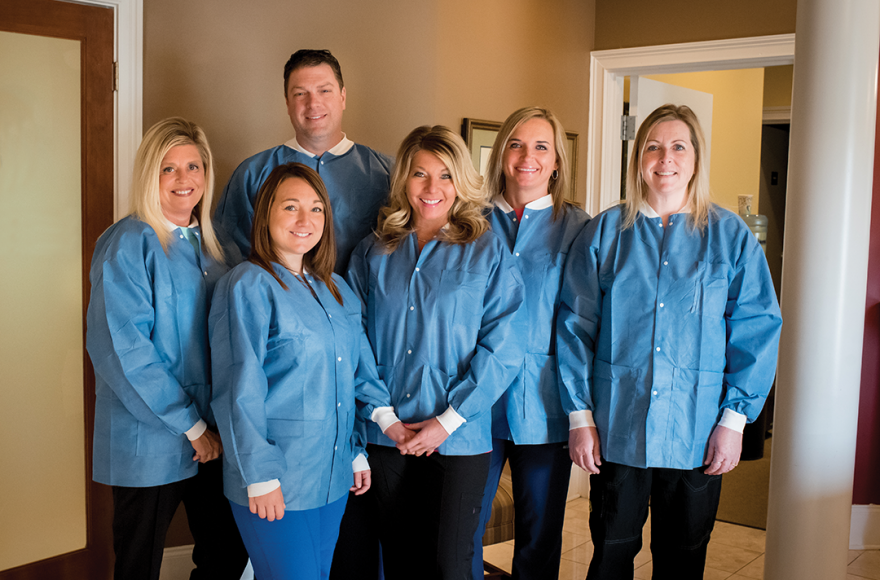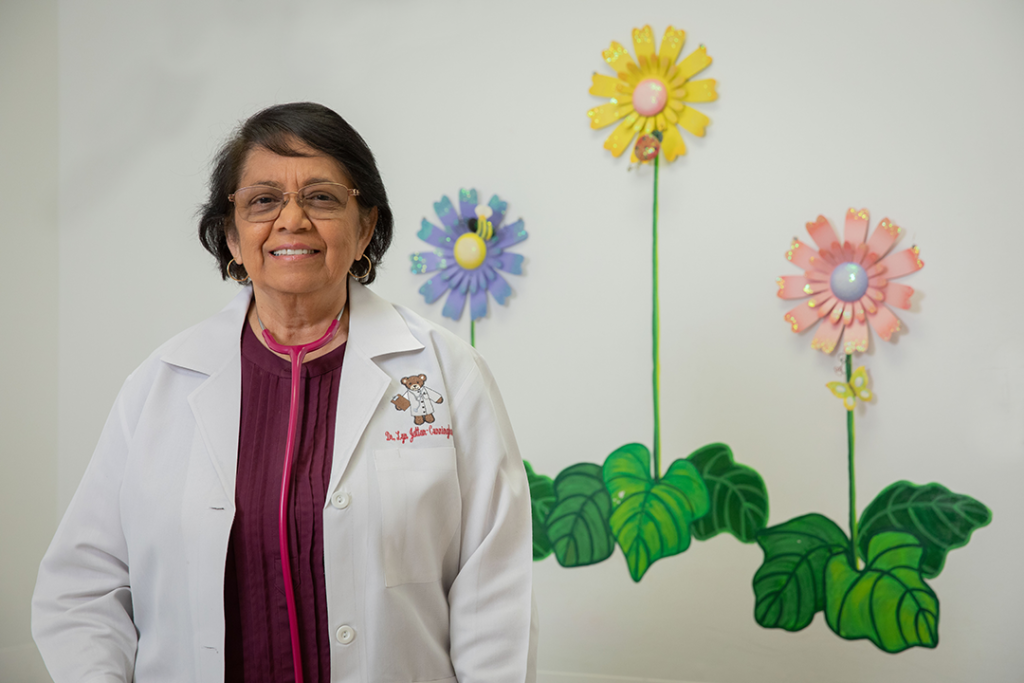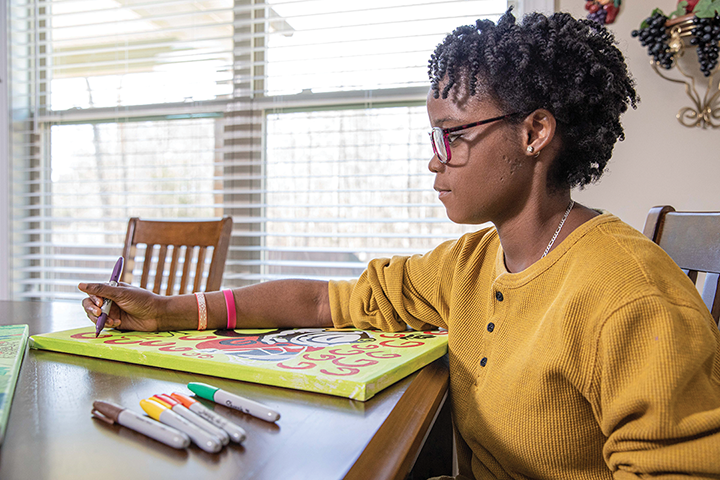Sedation dentistry offers those afflicted by odontophobia—an irrational and overwhelming fear of dentists—a new option through which to combat their condition.
If you have ever been filled with anxiety or dread at the thought of going to the dentist for a routine checkup, let alone for a filling, extraction or other procedure, you might be one of the millions of people worldwide suffering from odontophobia—an irrational and overwhelming fear of dentistry. A 2017 study estimated that odontophobia affects 15 to 20 percent of the world’s population. The condition not only leads to poor dental hygiene but to an overall loss of confidence that affects almost every facet of an individual’s life, from personal to professional.
According to Dr. Travis Hampton, who owns Alcovy Family and Cosmetic Dentistry in Covington, patients have a new option available to them to combat fear. Hampton is licensed to practice what is known as sedation dentistry. He gives medication to his patients, which calms them to the point that they can be injected with a local anesthetic, typically Novocaine, necessary to perform the dental work. However, getting a patient to that point requires conversation and trust.

“Odontophobia is a real condition that a lot of people don’t understand, perhaps even some dentists,” Hampton said. “Even early in my practice, I don’t think I understood how serious it was. I can pick out a phobic now, but I used to think people were overreacting. I’d think, ‘You can’t possibly feel that. I’ve numbed you 10 times,’ but now I understand that it’s a phobia.”
Hampton explains that the condition is rooted in trauma, usually a poor dental experience as a child or even as an adult.
“Phobia is about trust. Over time if you begin to trust, you can wean yourself off the medication. It’s really wonderful to help people who don’t even know that there’s an option.”
Alcovy Family and Cosmetic Dentistry Owner Dr. Travis Hampton
“The brain is traumatized by a bad experience,” he said. “When you’re in that situation, you’re like an animal ready to flee. The brain begins releasing chemicals, from the part of the brain called the hypothalamus. You don’t have control over your hypothalamus. You cannot say, ‘Stop being a baby. You’re being silly.’”
The chemicals—adrenaline and cortisol—are hormones secreted by the adrenal glands located on top of the kidneys. Among other physiological changes, they increase the heart rate and blood pressure and can cause the phobic person to sweat.
“[The patient] becomes very edgy and has a heightened sense of awareness, and that’s what gets us in dentistry,” Hampton said. “I can touch someone who’s phobic and they’ll jump and say it hurts even though it shouldn’t, but pain is felt in the brain. They feel everything 10 times more, so you give an injection to numb them up but they don’t get numb or their lip is numb but you try to work on their tooth and they jump out of the chair and start crying. You give them another injection and another and another. This frustrates the dentist, and it’s another nightmare experience for the patient.”
Instead, Hampton gives his sedation patients triazolam, or Halcion.
“It is the antidote to what the brain is releasing,” he said. “I’m very careful to stress to my patients [that] I’m not trying to make them go to sleep. That’s general anesthesia. I’m just trying to get them to relax. My intention is to balance the chemicals in their brain so they’re not scared anymore. Then I can give them one injection [of Novocaine], and they’ll go perfectly numb.”
Hampton wants to break what he calls the “vicious cycle” of the phobia.
“You’re so afraid to go to the dentist that you don’t go,” he said. “When you finally go, you’re forced to [do so] by a bad problem, which leads to emergency dentistry, which typically leads to another traumatic experience. It’s a vicious cycle that leads to tooth loss, poor dental hygiene, relationship problems [and] work problems.”
Hampton’s goal: to make the process as simple as possible for patients who are medically able to undergo the treatment. His office will not do sedation dental work on children or elderly patients because the dosages are based on weight, which can be challenging to calibrate in children. Elderly patients typically have too many underlying health conditions to safely use sedation. Patients cannot be health-compromised in any way, and Hampton will not use sedation on patients with respiratory issues such as asthma or chronic obstructive pulmonary disorder. For those phobics in good health, sedation dentistry can be a Godsend.
“This affliction affects one in six individuals,” Hampton said. “It’s not an uncommon thing. A lot of times I recognize the phobia before they do. I recognize the tension. Maybe they have never been able to get numb.”
At Hampton’s office, sedation appointments are always booked early in the morning. Because they will be under sedation, patients have to be driven to and from the office and cannot drive the day of the dental work. They take one pill the night prior, and they cannot have food after midnight, only clear liquids. Once they arrive at the office, they are given the second dose sublingually, or under the tongue. A trained assistant sits with them for 30 minutes to an hour while it takes effect.
“If I come back and they’re not ready, I’ll give them more,” Hampton said. “If that means I push back on my schedule, I do it, but I won’t start their dental procedure until they’re ready [which doesn’t mean falling asleep]. It’s all about managing expectations.”
Because many of the sedation patients have put off dental visits for years, Hampton often plays catchup. He usually does more work than a typical dental visit during a sedation procedure, but at the end of it, the patient does not remember anything.
“The wonderful thing about this drug is that it’s short lasting and it has amnesiac properties,” Hampton said. “Patients remember coming to the office, but they don’t remember anything after that. We can have full conversations, but they don’t remember it. It’s wonderful for patients who are scared.”
They do remember that what happened to them in the past did not happen to them again, and therein lies the key. “One of the most rewarding things I do is to take a patient whose smile is a wreck because they haven’t been to the dentist and get them to believe that they can be helped,” Hampton said. “When they get their smile back, they get their confidence.”
In short, sedation dentistry helps improve quality of life.
“Phobia is about trust,” Hampton added. “Over time if you begin to trust, you can wean yourself off the medication. It’s really wonderful to help people who don’t even know that there’s an option.”
For more information, visit alcovydental.com or call Alcovy Family & Cosmetic Dentistry at 770-787-6453.
Click here to read more stories by Patty Rasmussen.




